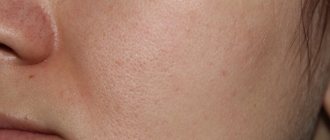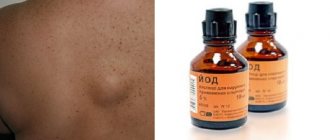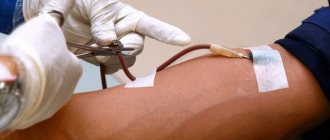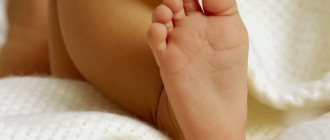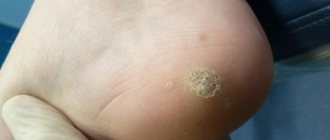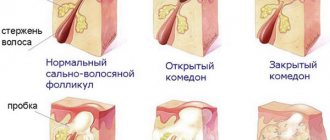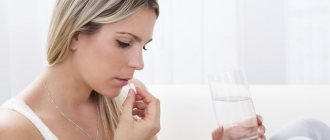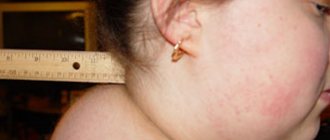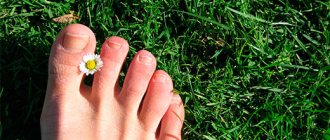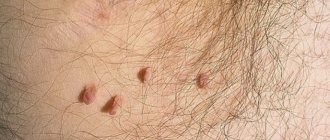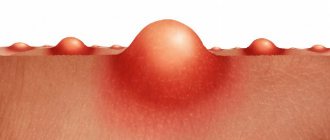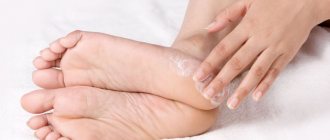Have you ever had large, red, painful pimples? They can be a big problem for both men and women between the ages of 8 and 50. The face is most susceptible to these rashes, but problem areas can also be the chest, back, and shoulders. Cystic acne is the most severe form of acne
Unlike other milder forms of acne, cystic acne is noticeably more painful and occurs when oil and dead skin cells accumulate deep in the hair follicles or pores. Cystic acne most often occurs during puberty in young boys, but unfortunately, it can continue into adulthood, especially if there is a hormonal imbalance. It is common for adult women to experience cystic acne due to their menstrual cycle, especially on the jawline and chin.
Conventional cystic acne treatments such as Accutane may work, but they are associated with very serious side effects, including birth defects and even Crohn's disease! That's why we always recommend trying your own home remedies for acne first. We are confident that you will be pleased with the results.
One of the most reliable and best means to combat cystic acne is to improve bowel function. It is the intestines that directly affect the condition of our skin. Proper skin care, probiotics and proper nutrition are the key to success. Back in 1961, a report showed that of 300 acne patients treated with a probiotic, 80 percent experienced clinical improvement. The idea of probiotics for skin health is not new, but we are happy to report that it has received more attention in recent years. So before you start picking at your skin or using dangerous topical or oral treatments, read on to find out how you can naturally treat your cystic acne and have clear skin again.
Acne vulgaris is the medical name for common acne. Acne conglobata, or cystic acne, is a more serious and rarer form of acne that occurs mainly in young men, but it can affect people of both sexes and different ages. When you have cystic acne, your skin's pores become clogged with oil and dead skin cells and become inflamed. This becomes cystic acne when the pores under the skin rupture, causing inflammation to spread into the surrounding skin tissue. This chain reaction can continue in the skin, causing more widespread inflammation, spreading more acne bacteria and more breakouts. Your body then forms a cyst around the area to prevent the inflammation from spreading further. Cystic acne is easily diagnosed by a dermatologist and does not require special tests.
Symptoms
Acne manifests itself with symptoms familiar to all of us. Cystic acne is more noticeable because it is a severe form and appears along with inflammatory papules and pustules. Acne can cause visible scarring.
Most people with acne do not usually experience physical symptoms, but the appearance of the skin can cause emotional distress. However, with cystic acne, distress may be greater and the cysts may be painful.
The importance of treatment is emphasized by the risk of scarring with long-standing cystic acne. This can result in small, deep pits in the skin known as "pox scars" and red, raised scars.
Symptoms and signs of cystic acne
On the affected skin, the pores expand, severe redness occurs, and it extends beyond the localization of the sebaceous glands. In place of the clogged pore, fibrous-nodular growths gradually form. Then they mature and transform into cysts, inside of which there is pus. Nodular cystic nodules are more noticeable than acne: the inflamed elements are dark red in color with a blue tint.
The process of their formation causes itching, then severe pain appears. In addition to visible symptoms, the development of a severe form of skin pathology almost always causes severe stress. Healing of acne leads to the formation of scars: the affected skin cells are replaced by connective tissue.
Causes
The pores of the skin have sebaceous glands that secrete an oily substance known as sebum. Normal sebum production helps protect hair follicles and skin, but overproduction and excessive skin cell growth can lead to clogged pores. This can create ideal conditions for P. acnes to overgrow.
Cysts are the most inflamed type of acne.
The biggest factor that causes acne is hormonal changes during adolescence. During puberty, levels of circulating androgen hormones increase sharply, causing increased sebum production; skin cells also begin to grow faster.
Factors that cause acne
- hormonal changes associated with the menstrual cycle, pregnancy, hormone therapy and stress
- oily cosmetics, detergents, lotions
- high levels of humidity and sweating
- genetics
- certain drugs and chemicals, such as corticosteroids, lithium, phenytoin, and isoniazid, that may worsen or cause acne-like rashes
How do acne appear?
Cystic acne is an inflammatory disease that develops in the area of the sebaceous glands. The primary cause is seborrhea, in which the sebaceous glands begin to produce secretions higher than normal and of altered quality, it becomes thicker. Due to its thickness, sebum cannot completely come out and clogs the ducts. Bacteria living on the surface of the skin tend to enter an environment that is favorable for their reproduction.
As a result of their activity, inflammatory processes occur and nodular cystic acne appears. In severe forms, inflammation affects not only the epidermis, but spreads deep into the dermis. This is the cause of the appearance of fibrous scar defects.
Dermatologists consider cystic acne to be one of the forms of acne vulgaris or juvenile acne, which occurs in a severe form, since they most often occur in young people aged 15 to 18 years and then gradually improve. But the disease can take a longer period, especially in the absence of proper treatment.
Cystic acne primarily appears on the face, chest, and back. The inflammation is very pronounced and is not limited only to the sebaceous glands, going far beyond their limits. This form always occurs with complications in the form of enlarged pores, persistent redness, pigmentation disorders, fibrous colloidal growths and pits. As the process develops, dense, deep nodules transform and move to the next stage, when a pimple cyst or phlegmous acne is formed. The cavity of the cysts is filled with pus, they gradually begin to merge, forming large continuous inflamed areas of skin with a red-bluish tint. These formations are very painful, especially when pressed.
Most often, such acne appears in adolescence.
Cyst-shaped acne in any case leaves behind fibrous scar elements. This occurs from the destruction of adipose tissue and collagen fibers, which are gradually replaced by hard connective tissue. Post-acne can be in the form of fibrous-hypertrophic, atrophic, colloidal scars.
Treatment
Cysts can cause damage to the skin, leading to scarring.
Treatment of severe, cystic acne requires the help of a specialist doctor and some self-care measures. Drug treatment can be effective in preventing cysts and scarring.
Benzoyl peroxide
Benzoyl peroxide is a treatment available to people with acne of any severity. Benzoyl peroxide can be purchased at pharmacies without a prescription. It has been the mainstay of acne treatment for over 50 years. Aqueous and alcohol-based benzoyl peroxide formulations are available, and the appropriate form depends on your skin type. Alcohol-based products dry out the skin, making them more suitable for people with oily skin.
Benzoyl peroxide preparations, which include cleansers, lotions, creams, and gels, are used once or twice daily. The most common side effect is skin irritation. Allergies usually do not occur.
Isotretinoin
Isotretinoin is a medication for the treatment of cystic acne that is sold under several brand names, including Absorica, Amnesteem, Claravis, Myorisan and Sotret.
Isotretinoin is very effective, but has significant side effects and is dangerous during pregnancy. It is usually taken at a dose of 1 milligram per kilogram of body weight once daily for 16 to 20 weeks.
For moderate acne, isotretinoin is not prescribed unless standard treatment with oral antibiotics is ineffective. However, isotretinoin is recommended as the first line treatment for severe acne.
Side effects of isotretinoin include:
- dry eyes and genitals
- chapped lips
- joint pain
- depression
- liver damage
- elevated lipid levels
Isotretinoin is a teratogenic drug. This means that taking it during pregnancy at any dose, even for a short time, can lead to birth defects. Isotretinoin may also cause pregnancy loss or premature birth and may cause the death of the newborn.
Therefore, women who may become pregnant should use contraception for 1 month before, during, and at least one month after treatment with isotretinoin.
Pregnancy testing is also necessary before starting isotretinoin and then every month until you stop taking the drug.
Steroid injections
Injecting the corticosteroid medication triamcinolone directly into the cyst can reduce inflammation and prevent scarring. This treatment is carried out by a dermatologist. There may be short-term, localized side effects following the injection.
Dermatologists may suggest cutting and draining some large cysts, but it is strongly recommended that people do not try to do this themselves as it can make the skin problem worse and cause severe scarring and deep infection.
Contraceptive drugs
Long-term treatment for acne in women may include birth control pills, which suppress sebum production. If necessary, oral medications containing estrogen and progesterone can be used for more than 6 months. A drug called spironolactone may also be prescribed along with the tablet. This is a synthetic steroid that suppresses androgens.
How to cure cystic acne?
Now let's talk about how you can get rid of this scourge. It has been said many times that it is very difficult to cure this type of rash. The fact is that essentially these are inflammations that develop deep in our skin. And it is extremely difficult to do something about this, because no matter how much we smear the affected area with medicinal cosmetics, cystic acne will not clear up. After all, the source of inflammation is deep inside.
But still, there are ways. In this section we will discuss exactly them, and also talk about how correct and effective it is to try to cope with this type of acne on your own.
What can a dermatologist do?
Specialists have a huge number of methods that can be used to treat cystic acne and pimples. Now we will tell you only about the most common and well-known methods that a doctor can offer you. These include:
Laser acne removal
You've probably heard that skin is buffed this way to get rid of acne scars. But now there are installations that help cure acne through thermal exposure. Essentially, they will dry out the cysts and reduce the intensity of the sebaceous glands to prevent the same situation from happening again. The procedure is done by a cosmetologist.
Needling and drying the rash
It sounds disgusting, but the method is quite effective. Under sterile conditions, the doctor inserts a needle into the pimple and removes its contents. After this, he treats the area with a special medicine to prevent the appearance of a rash in the area where the pus from the pimple has entered.
It is not recommended to do this procedure on your own, as you can cause a serious infection in the wound.
Drugs
The cystic form is very rarely treated with medications. But in cases where the appearance of acne is caused by certain processes that occur inside our body, the doctor prescribes special medications. Usually, their action is not aimed at acne, but at eliminating the problems that led to its occurrence.
Is it possible to dry them yourself?
Theoretically, this is also possible. But doctors do not recommend doing amateur activities under any circumstances, because you can only cause harm or do everything wrong. Cystic acne specifically does not respond well to home treatment. This is a specific problem, but really the most we can do is dry them out a little. And then, simply prevent them from appearing again.
So what can we do:
- wipe acne with antibacterial agents . For example, salicylic acid. They will kill microbes, so inflammation will not develop and will go away on its own over time;
- use benzoyl peroxide . The name of this substance sounds a little scary, but at the moment it is one of the most famous and effective medications for acne. It is worth applying the product with this component to the pimples pointwise.
As you can see, we don't have many options. In principle, the best option would be to do nothing, since in such a situation your actions are more likely to ruin everything than to help.
Home Remedies
Taking practical steps to prevent acne from getting worse is helpful for anyone with acne, including people with cystic acne.
- Don't wash your face too often - twice a day is enough, use a mild soap or cleanser and lukewarm water.
- Avoid harsh scrubbing when washing your face: Avoid abrasive soaps, cleansing granules, astringents, or exfoliators.
- Leave your acne alone.
- Avoid using heavy cosmetics. When applying makeup, choose non-comedogenic, water-based formulations, avoid oil-based formulations, and be sure to remove makeup before bed.
Additional diagnostics
When making a diagnosis, a dermatologist focuses not only on the clinical picture, but also takes into account the results of additional studies. For nodular cystic acne, it is advisable for the patient to undergo the following procedures:
- Dermatoscopy.
- Skin pH testing.
- Analysis of discharge (culture).
This form of the disease requires differential diagnosis with other skin pathologies - folliculitis, streptococcal impetigo, deep trichophytosis, etc.
Prevention
If you have minor acne or want to reduce the risk of developing acne on clear skin, the following steps will help:
- Gently cleanse your skin in the morning, before bed and after exercise.
- Try to avoid touching your skin
- Shave carefully and soften your skin with soapy water.
- Avoid excessive sun exposure as this can affect the health and appearance of your skin.
- Wash your hair regularly. People with oily hair can do this daily.
Related research article: Doctors are reducing the use of antibiotics to treat acne.
Diagnostic measures
Cystic acne has dangerous consequences for the skin. Acne causes significant psychological distress to a person and can lead to depression and social isolation. Therefore, if nodular inflammatory elements appear on the skin, you should consult a dermatologist. Firstly, the doctor will rule out other forms of acne, for example, folliculitis, papulopustular acne, impetigo, etc. To do this, in addition to a visual examination, it may be necessary to collect purulent contents to identify the type of bacteria and their resistance to antibiotics, measure the pH level of the skin, to assess the condition of the cover.
Why is it absolutely forbidden to squeeze out cystic acne?
The size of cysts under the skin reaches twenty millimeters, but on the surface a pimple may not exceed one. When pressed, pus and other fluids flow under the skin, which can provoke an even larger and more extensive inflammatory process. If you want to superficially get rid of hated acne, at an early stage, you can go to a cosmetology clinic, where a specialist will clean it. Also, by constantly visiting a specialist and getting rid of the causes (acne and pimples), you can prevent the development of the disease.
Remember that inaction will only aggravate the skin condition and it will be almost impossible to recover completely. Timely combined therapy will help get rid of cystic acne, but be patient and strong, because treatment can take from several months to several years.
Cysts are abnormal formations that resemble a lump or lump filled with liquid or solid contents. They are common on the skin and can be found in any area of the body, including the scalp, face, neck and back. Cysts on the face are usually harmless and can often go away without treatment.
It is difficult to determine on your own whether the lump that forms is a cyst or something else that requires treatment. It is advisable to visit a doctor to diagnose the condition. Most often, cysts are confused with boils or skin abscesses that occur as a result of infection and cause pain.
How the disease progresses and develops
There are three stages in total:
- Small white and black dots form on the face. If you can’t get rid of it at home using usual remedies within six to eight weeks, you should visit a dermatologist. At this stage, coping with the disease will be easy.
- Purulent pimples, yellow or white acne appear.
- There is a manifestation of multiple purulent rashes, which are extensive and deep. Without treatment, the rash will lead to the formation of cysts with a diameter of ten to twenty millimeters. At this stage, it is very difficult to fight the disease, and scarring almost always appears. Cystic rash is a chronic pathology that may not appear for many years. It may occur again in case of decreased immunity, hormonal imbalances, or poor nutrition.
Make your own acne treatment
"When treating acne, the main goal is to address as many causal factors as possible," says Zeichner, who recommends taking a DIY approach when it comes to treating acne. He suggests combining equal parts 2.5% benzoyl peroxide, 2% salicylic acid and 1% cortisol cream.
“Benzoyl peroxide kills acne-causing bacteria, salicylic acid kills excess oil to keep pimples dry, and cortisol reduces inflammation,” Zeichner says of the power trio. Or you can buy ready-made products: Neutrogena On-the-Spot Acne Treatment (RUB 1,400), Clean and Clear Advantage Acne Spot Treatment (RUB 335).
Back to contents
Therapeutic measures
Cystic acne requires an integrated approach to treatment, which involves the use of both local and systemic antibacterial drugs, physiotherapy, prevention of the appearance of new acne elements, and elimination of post-acne.
Cystic acne requires an integrated approach to treatment
First of all, treatment begins with finding out the causes of the disease. In this case, the elimination of provoking factors is carried out in parallel with acne therapy.
People suffering from severe acne should prepare for long-term treatment, which can take anywhere from several months to 2 years.
Drugs
Among local antibiotics, preparations based on the following active substances are used:
- azelaic acid – “Azelik”, “Skinoren”;
- benzoyl peroxide - “Baziron AS”, “Eclaran”;
- retinol (tretinoin, isotretinoin, adapalene): “Retin-A”, “Isotrexin”, retinoic ointment, “Differin”, “Klensit”. Roaccutane and Acnecutane are used in tablet form.
Baziron AC can be used to dry out acne
In the treatment of acne in men, retinoids take a leading position. They reduce the production of sebum, accelerate the exfoliation of dead epidermal cells and thereby normalize the processes of keratinization. Also, retinol derivatives gradually dissolve sebaceous-horn plugs and thereby cleanse the pores.
Benzoyl peroxide derivatives dissolve accumulations of keratinized scales, thereby facilitating their rapid emergence to the surface and cleansing the ducts of the sebaceous glands.
When acne reaches a severe stage in women, the primary role is given to drugs containing estrogen hormones, but their prescription is carried out exclusively by a doctor after undergoing a medical examination not only from a dermatologist, but also from a gynecologist and endocrinologist.
In any case, the doctor takes an individual approach to each patient and selects medications so that the actions of one do not reduce the effectiveness of the other. Since cystic acne requires the use of systemic antibiotics, drugs that reduce their side effects are also prescribed - probiotics, hepaprotectors, antimycotics.
Hardware methods
Complex therapy, as prescribed by a doctor, may include the following procedures:
- ultrasonic facial cleansing;
- use of the drug Darsonval;
- photo and laser therapy.
Ultrasonic facial cleansing is one of the popular cosmetic procedures
To generally strengthen the immune system, it is possible to carry out ultraviolet and laser irradiation of blood - UVBI and ILBI technologies, respectively.
Skin care
The fight against nodular cystic acne also involves mandatory cosmetic skin care along with treatment.
Proper cosmetic facial care is important
Be sure to remove dead epidermal cells through scrubbing and peeling procedures. Cleanse the skin with products suitable for your skin type. During treatment, avoid using cosmetics that clog pores: powder, blush.
The use of traditional medicine is ineffective for severe acne. They can be used as adjuvant therapy.
Relax
Do yoga, download a meditation app, get a manicure. Do everything you can to reduce your stress levels. “There is a strong connection between emotional stress and acne, including cystic acne,” Zeichner says. “Stress increases the levels of hormones that stimulate the sebaceous glands.” Since stress is so difficult to completely avoid (obviously), do everything you can to minimize its impact on your body. This may not be enough to completely clear your acne, but it certainly won't hurt.
Back to contents
